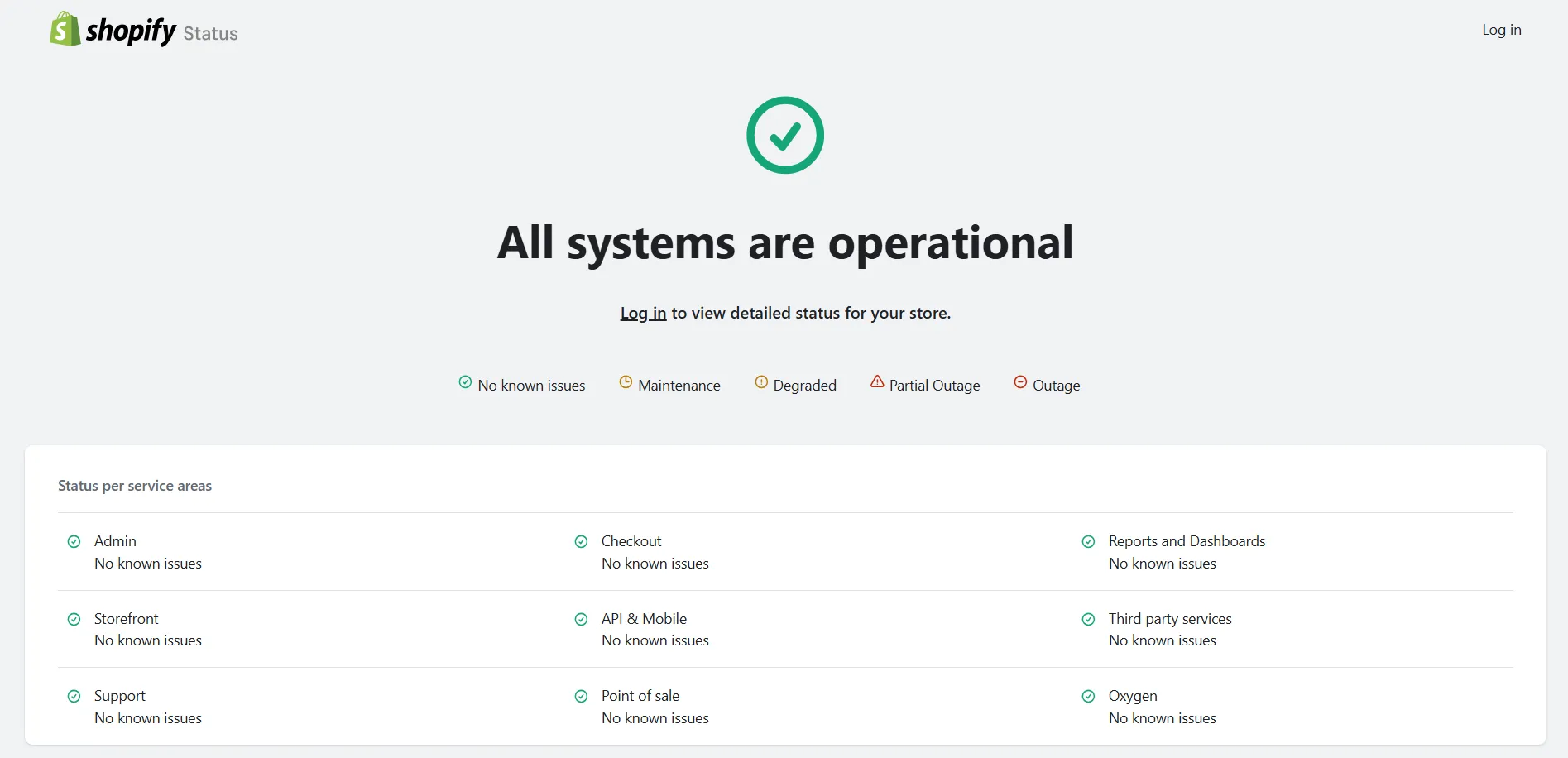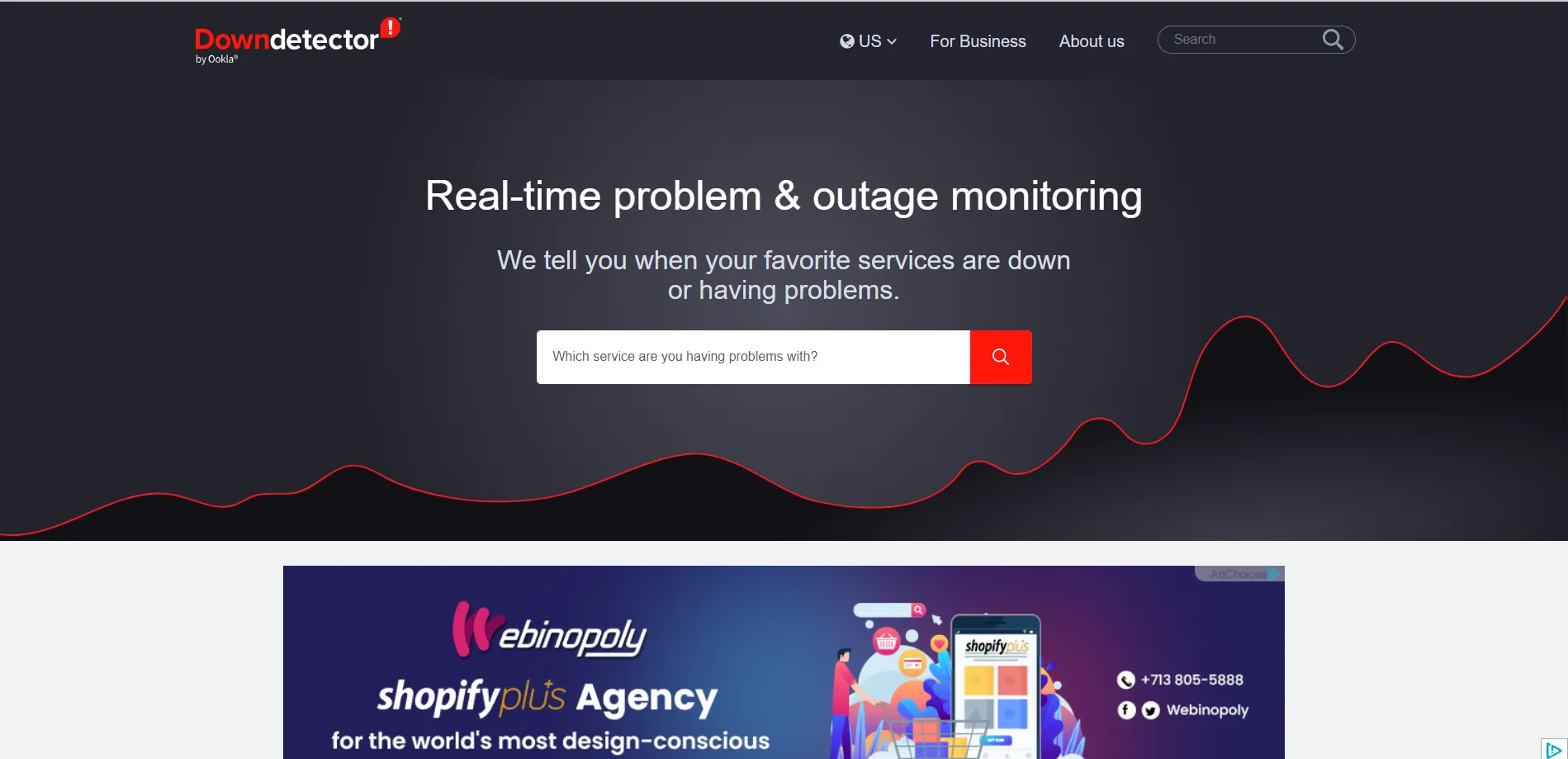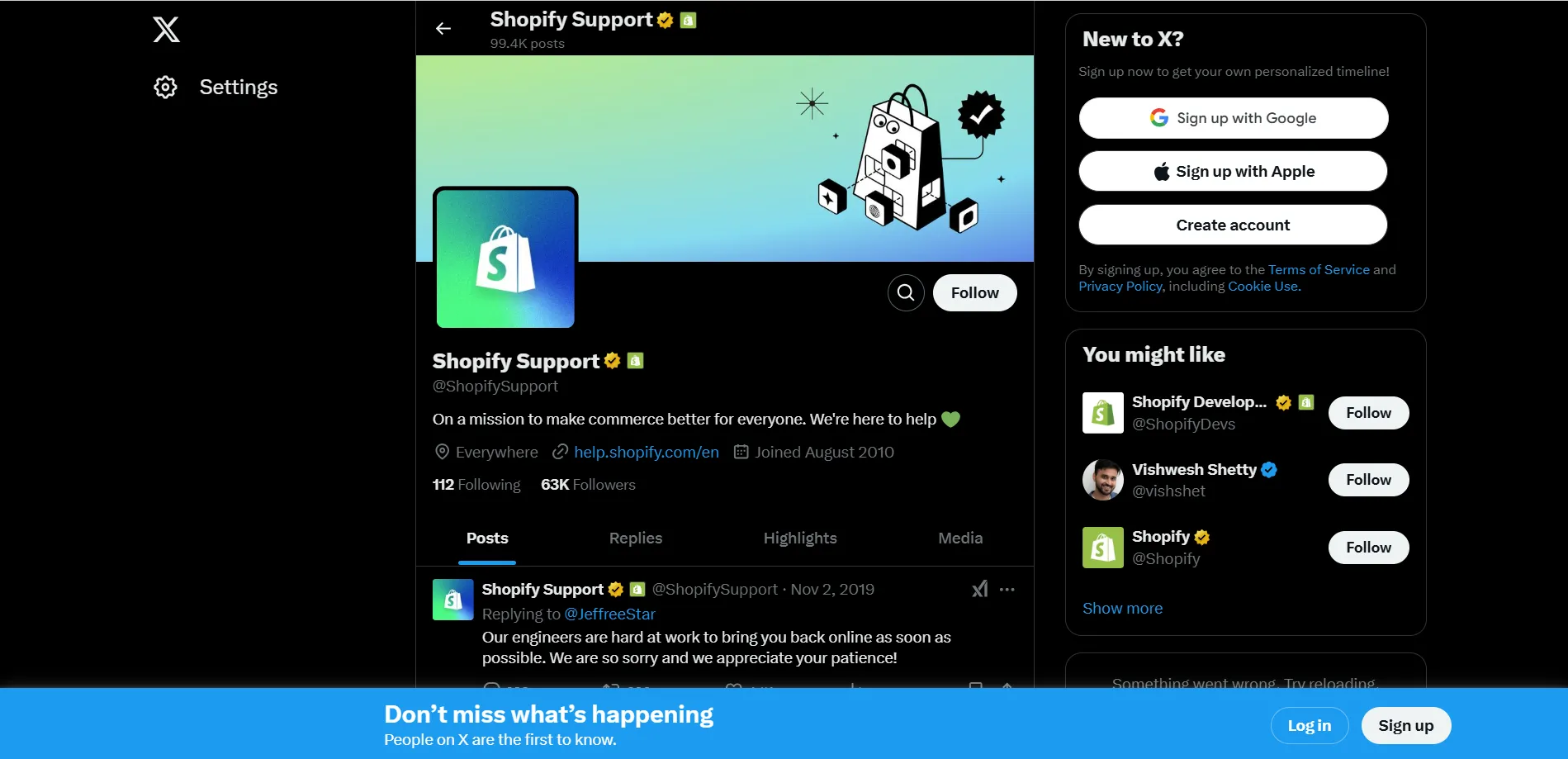
Problems with logging in, processing orders, or updating your store can arise, leading store owners to question, Is Shopify Down?
As one of the leading ecommerce platforms powering millions of online stores globally, Shopify is highly dependable. However, like any technology, occasional downtime is possible. If you suspect an issue, this guide will help you check Shopify’s live status and provide steps to handle it effectively.
What is the Shopify Server Status?
It is a real-time report that shows whether Shopify’s platform is running smoothly or experiencing issues. It helps merchants check for outages, server errors, or maintenance updates that might affect their stores.
How to Check If Shopify Is Down
When your Shopify website is not functioning correctly, the first step is to confirm whether the issue lies with Shopify or your setup. Here’s how:
1. Visit Shopify’s Status Page
Shopify has a dedicated status page that provides proper updates about the platform’s performance. It displays:
- The operational status of many services, including Admin, Checkout, and Online Store.
- Past incidents and resolutions.
2. Use Third-Party Tools Like Down Detector
Shopify Down Detector is a popular tool for checking platform outages. Search for “Shopify down” to see reports from other users in real time. The tool also shows:
- Geographic heat maps of affected regions.
- A timeline of reported issues.
Shopify posts updates about server issues or outages on their official Twitter account (@ShopifySupport). This is especially helpful during widespread outages.
4. Test Other Websites
If you suspect a broader internet issue, check whether other websites are accessible. Sometimes, local network problems can mimic a platform-specific outage.
Common Reasons for Shopify Downtime
Apart from scheduled maintenance, whenever Shopify goes down, it typically impacts one of the following areas:
- Server Maintenance
- High Traffic Volumes
- Technical Glitches
- Third-Party App Conflicts
- Local Network Issues
Shopify occasionally performs scheduled maintenance to improve performance and security. During these times, certain features or services might be temporarily unavailable.
During events like Black Friday or flash sales, an unexpected surge in traffic can overload servers, leading to temporary slowdowns or outages.
Like any technology, Shopify’s system may encounter bugs or errors that cause brief disruptions to the platform.
Apps installed on your store can sometimes conflict with Shopify’s functionality, potentially causing your website to go offline or behave unpredictably.
Not all problems are on Shopify’s end. Your internet connection or local network setup could cause access issues.
What to Do If Your Shopify Website Is Down
If your Shopify store is down and you encounter an error page while trying to log in or access your store, don’t panic. Follow these steps to resolve the issue and minimize its impact on your business:
1. Communicate with Customers
Transparency is key during an outage. Inform your customers about the situation to manage their expectations.
- Use social media platforms like Instagram, Facebook, or Twitter to post updates about the outage.
Example: “We are currently experiencing technical issues with our store. We’re working to resolve this as quickly as possible. Thank you for your patience!”
- Send a quick email blast to your mailing list apologizing for the inconvenience and reassuring customers that their orders are safe and the store will return online soon.
Example: “Dear customers, our store faces some technical difficulties. We are on it and will update you once the issue is resolved. Thank you for your understanding!”
2. Check for Updates
Before assuming the issue is with your store alone, verify if it’s a platform-wide problem.
- Visit the Shopify Status Page (status.shopify.com) to see if there are ongoing outages or maintenance.
- Follow Shopify’s Twitter account (@ShopifySupport) for real-time updates and troubleshooting tips.
Example: Shopify may announce, “We are aware of an issue affecting login services and are working to resolve it.”
3. Contact Shopify Support
If the issue is not listed on Shopify’s status page and appears specific to your store, contact Shopify Support.
- Use their live chat feature for immediate assistance.
- Email Shopify Support for more detailed inquiries, especially if you suspect a technical problem unique to your store.
- Call Shopify’s phone support if available in your region for urgent issues.
Tip: Be prepared to provide details like recent changes to your store, installed apps, or updates that may have contributed to the problem.
4. Check Third-Party Apps
Sometimes, the issue may not be with Shopify’s servers but with apps integrated into your store.
- Disable any recently installed or updated apps to rule out conflicts.
Example: If you recently added an app for product reviews and your store went down after installation, try disabling it to see if the issue is resolved.
- Review the app settings for potential errors and contact the app developer if needed.
5. Test Your Store After Fixes
Once Shopify or you have resolved the issue, ensure your store is fully functional before informing customers it’s back online.
- Test the checkout process by placing a test order to ensure smooth transactions.
- Check page load times across your store, as slow-loading pages might deter customers.
- Verify that all integrations and apps work correctly to avoid hidden issues.
Example: If you use a third-party shipping app, confirm it’s syncing correctly with Shopify.
How to Prevent Future Issues
While you can’t stop Shopify outages entirely, you can take proactive steps to minimize their impact on your business and ensure smoother operations:
1. Regular Backups
Regularly backing up your store’s data is essential to safeguard your business.
- Export your product information, customer data, and order history periodically.
- Use backup apps available on Shopify to automate the process.
- In case of unexpected issues, backups ensure you can quickly restore critical data without losing important information.
2. Monitor Performance
Keeping an eye on your store’s performance helps you spot potential issues before they escalate.
- Use tools like Google Analytics or Shopify’s built-in reporting features to track key metrics such as page load times, bounce rates, and conversion rates.
- Identify any unusual patterns, such as slow loading times, which could indicate underlying problems.
- Address these issues promptly to maintain a seamless shopping experience for your customers.
3. Stay Informed
Awareness of platform updates and outages can help you prepare for potential downtime.
- Subscribe to Shopify’s status updates or follow their official channels for real-time alerts about scheduled maintenance or known issues.
- Set up email or SMS notifications for outages or updates to ensure you are always informed.
- Use this information to plan sales campaigns and avoid disruptions during maintenance windows.
4. Choose Reliable Apps
Third-party apps can enhance your store’s functionality, but poorly optimized apps can cause conflicts or slowdowns.
- Research and vet apps before installation by reading reviews and checking compatibility with your store’s theme and other apps.
- Regularly review the apps you’re using and uninstall any that are no longer necessary or cause performance issues.
- Opt for apps with active support teams to assist you if something goes wrong.
Wrapping Up
If you are asking if Shopify is down right now, start by checking Shopify’s status page or third-party tools like Down Detector. While outages are rare, they can disrupt your business. By staying informed and taking proactive steps, you can minimize downtime’s impact and ensure a seamless customer experience.
Bookmark this guide for future reference to handle any Shopify downtime with confidence.
FAQs
1. How often does Shopify experience downtime?
Shopify is highly reliable, with most outages being rare and short-lived. Scheduled maintenance is typically announced in advance.
2. Can I get compensated for Shopify downtime?
Shopify does not usually offer compensation for downtime unless stipulated in specific terms. Check your agreement or contact support for clarification.
3. What alternative platforms can I use if Shopify frequently causes downtime and recurring issues?
If Shopify experiences frequent downtime and doesn’t meet your needs, you can consider alternative e-commerce platforms such as WooCommerce, BigCommerce, or Wix.
4. What is Shopify status?
Shopify status shows the platform’s operational health, indicating if services are running smoothly. Check the Shopify Status page for updates on issues or maintenance.











About the author
Bhavesha Ghatode
Explore Content with Bhavesha, a passionate and dedicated technical content writer with a keen understanding of e-commerce trends. She is committed to sharing valuable insights, practical assets, and the latest trends that can help businesses thrive in a competitive environment.